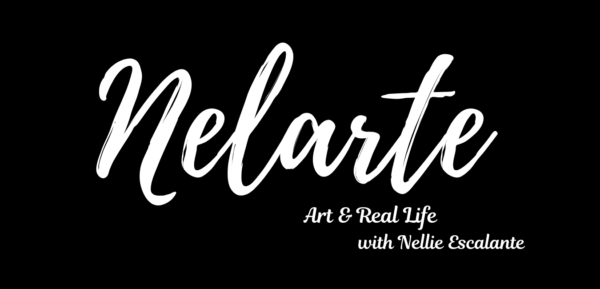
Going to see the exhibition Amalia Mesa Bains: Archeology of Memory with my sister was so appropriate. My sister lives over 900 miles away so I don’t see her often but when she does come, it’s very much like an excavation of memories, and there are certain memories that only she holds as the older sister. Her visits become archeological memory digs.
Amalia Mesa-Bains: Archaeology of Memory is the first retrospective exhibition by the pioneering artist and curator. Born in 1943 to a Mexican immigrant family, Mesa-Bains has been a leading figure in Chicanx art for nearly half a century. Her practice explores feminist themes, spirituality, and cultural diversity informed by her practice of communal altar building.
While my sister chatted with the guard, I stopped at this work, The Virgin’s Garden from Venus Envy Chapter II; The Harem and Other Enclosures, 1994/2022

This work is a re-imagining of the Virgen de Guadalupe, (the Virgin Mary in general), as a goddess, who switches in and out of outfits. In the original work, the artist’s mother made the outfits. My mind quickly went to memories of my mom at her singer sewing machine, telas (fabric) everywhere! I remember the first sewing partnership I had with my mom. I cut the pattern, she sewed the dress. This was a wondrous moment of connection and creation. It was truly a clothes garden, literally, the fabric had flowers! It was magical, much like this work.
When you think of a garden, you think about growth and renewal. I would imagine this partnership with the artist’s mom was like that. A self care feast much like the painting on the left side of the work implies.

My sister joined me on this second stop, Cihuateotl with Mirror from Private Landscapes and Public Territories, 2018.

Both my sisters and I often talk about feeling larger than where were at now, not living our full potential. Although we are happy moms (between us three sisters we have 8 kids!) caregiving takes a toll. This piece is inspired by the Aztec goddess, Cihuateotl. The cihuateteo (plural) were women who died at childbirth and then turned into deities.There is a death that happens in child rearing as well, an expected sacrifice that sometimes causes us to shrink into spaces not made for us.
I love that Amalia says, about this piece…
“It’s really about how to be courageous and how to be strong and how to stand up for the things that actually matter to you when the space doesn’t allow it so I made this landscape this place for this giant woman with her giant dress and her giant cape and her giant mirror because I wanted to acknowledge that, for many women, they’re forced through marriage, through domination, through professional limitations, to be in spaces that really aren’t big enough for them.”
Did I mention that my mom’s mom died in childbirth?

There was something about taking a photo together in front of this giant tunic/cape. As I mentioned earlier, my mom used to sew all of our clothes, and viewing this now makes me feel like my mom’s sacrifices, coming here from Puerto Rico, with so many unknowns, working in garment factories, getting her Associates degree and becoming a paraprofessional in the NYC school system…she accomplished so much for herself but mostly for us! She saw beyond her potential, pushed herself and it’s as if she sewed this giant cape for us knowing that we too could grow into it. She always saw beyond our potential for more. Always, encouraging, always nurturing. Her mom dying in childbirth, made her a warrior for us.
When we stumbled upon this work, Circle of Ancestors, 1995, My sister said, “you know that mami used to paint fruit too, right?” I was like, what? I didn’t know that. This has happened before, my sister revealing tidbits about my parent’s lives. She is four years older than me and perhaps living with my parents by herself, years before I arrived, bestowed on her an intimacy, a trust, a confianza with my parents allowing her to be privy to information that I knew nothing about. Or maybe she just eaves dropped better, I don’t know, lol.

Circle of ancestors provides this very framework that we depend on each other for knowledge, for information, for wisdom.
“Circle of Ancestors contemplates Mesa-Bains’s own artistic development by imagining a community of forebears that includes goddesses and cultural icons alongside the artist’s family members. Each chair in this circle of power is an altar dedicated to a rebellious woman.”
Wall Text, El Museo del Barrio
I believe that this exhibition is not meant to be viewed alone. Mesa Bain’s work is, and has always been communal, about the collective, about our shared stories. Are her personal stories layered throughout? Yes! But some of her stories are mine too. Even the Catholic ones, and I’m Protestant!
So bring your tia, your mom, your girlfriends, and sisters too as you excavate your true selves on this fun archeological dig.
Amalia Mesa-Bains: Archeology of Memory is on view at El Museo del Barrio through August 11, 2024

Thanks Nellie, this was a beautiful article.
Thank you!